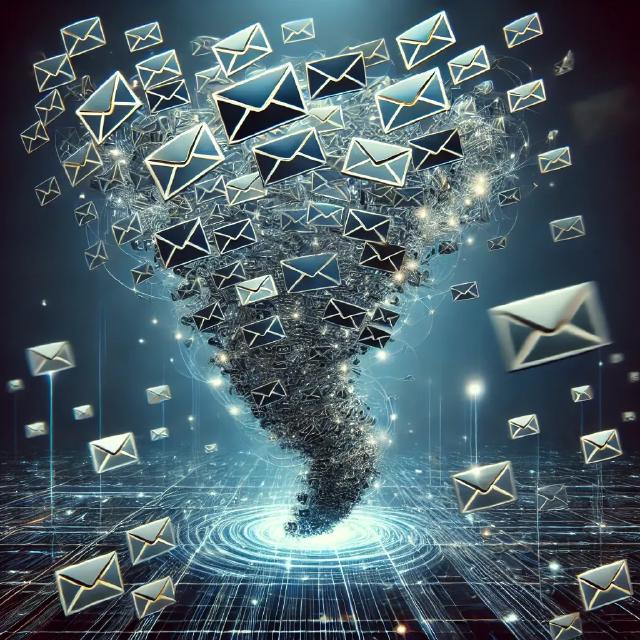Understanding email storms: causes, effects, and how to prevent them

The email storm is a phenomenon that can quickly spiral out of control, disrupting productivity and overwhelming communication systems. It occurs when a large number of people respond to a single email or thread, creating a cascade of replies that floods inboxes. While often unintended, email storms can have significant consequences for organizations.
In this article, we’ll explore what causes email storms, their potential effects, and how to mitigate and prevent them.
What Is an Email Storm?
An email storm, also known as a reply-all storm, is a situation where:
- A single email is sent to a large group of recipients.
- Recipients begin replying to the email using the “Reply All” function.
- The volume of responses escalates as more people join the thread, often adding unnecessary comments or requests to stop the chain.
While seemingly harmless, an email storm can rapidly become disruptive, especially in large organizations with hundreds or thousands of employees.
Causes of Email Storms
1. Misuse of Distribution Lists
Large email distribution lists are often used for announcements or updates. An accidental inclusion of recipients who don’t need the information can trigger a storm when people respond unnecessarily.
2. Reply-All Button Misuse
The “Reply All” function is often misused when individuals feel compelled to contribute, even if their response adds little value.
3. Automated Responses
Out-of-office replies or automated email filters can unintentionally amplify a storm, adding redundant messages to the thread.
4. Human Error
A simple mistake, such as sending a sensitive or urgent message to the wrong group, can lead to a flurry of replies.
Effects of Email Storms
1. Productivity Loss
When inboxes are flooded, employees waste time sifting through irrelevant messages, detracting from their work.
2. System Overload
In extreme cases, email storms can strain an organization’s email servers, leading to slowdowns or outages.
3. Frustration and Stress
Employees may feel frustrated or stressed by the barrage of emails, particularly when they cannot easily mute the conversation.
4. Reputational Impact
If an email storm involves external parties, it can reflect poorly on an organization’s communication practices.
Famous Email Storms
The Microsoft Email Storm (1997)
One of the first widely known email storms occurred within Microsoft, involving 25,000 recipients. It clogged email systems and served as a wake-up call for better email management practices.
U.S. Department of State (2015)
An email storm involving 16,000 employees sparked chaos, leading to public scrutiny and highlighting the importance of clear communication policies.
How to Prevent Email Storms
1. Limit Access to Distribution Lists
Ensure that only authorized individuals can send emails to large groups. Use moderation features when possible.
2. Educate Employees
Train employees on email etiquette, including the appropriate use of the “Reply All” function.
3. Use Technology Solutions
Implement tools that allow users to:
- Mute or leave email threads.
- Automatically filter or archive excessive replies.
4. Set Clear Communication Policies
Establish guidelines for mass emails, including approval processes and appropriate use cases.
5. Enable Server-Level Protections
Configure email servers to detect and throttle excessive traffic from reply-all chains.
How to Manage an Ongoing Email Storm
1. Send a Clarifying Email
A moderator or administrator should send a message asking participants to stop replying and explaining how to leave the thread.
2. Temporarily Disable the Thread
IT administrators can suspend the affected distribution list to prevent further replies.
3. Mute or Block the Chain
Encourage employees to mute or block the thread in their email clients until the storm subsides.
Conclusion
While email storms may seem like minor inconveniences, their potential to disrupt operations and systems should not be underestimated. By understanding the causes and implementing preventative measures, organizations can significantly reduce the likelihood of email storms and maintain efficient communication practices.
Ultimately, fostering a culture of email etiquette and leveraging technology to manage communication channels is key to avoiding these digital tempests.